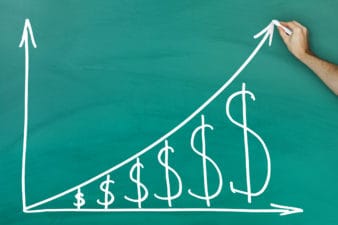The global equity markets have become volatile amid fear of imposing protectionist policies. After imposing a 25% tariff on steel and aluminum imports, Donald Trump is working on imposing reciprocal tariffs on every country that imposes tariffs on United States imports, thus driving prospects of a trade war. Amid this uncertain outlook, the equity markets could remain volatile in the near term. So, I believe investors should look to strengthen their portfolios with quality defensive stocks to sail through this market turbulence. Against this backdrop, here are my three top picks.
Waste Connections
Waste Connections (TSX:WCN) would be an excellent defensive stock to have in your portfolio due to the essential nature of its business and consistent financial performance. The non-hazardous solid waste management company has grown its operations across Canada and the United States through organic growth and strategic acquisitions. Besides, its focus on exclusive and secondary markets and integrated operations have allowed it to enjoy higher margins, thus driving its financials and stock price. Over the last 10 years, WCN has delivered impressive returns of 495% at an annualized rate of 19.4%.
Meanwhile, I expect the company’s financial uptrend to continue driven by organic growth and continued acquisitions. Favourable price revisions, higher commodity prices, ongoing acquisitions, and expansion of operating margins amid falling employee turnover due to improved employee engagement could support its financial growth in the coming quarters.
The company’s management expects its 2025 topline to come in between $9.45–9.6 billion, with the midpoint representing 6.8% year-over-year growth. Besides, its adjusted EBITDA (earnings before interest, tax, depreciation, and amortization) margin could expand by 80 basis points to 33.3% while generating free cash flows of $1.30–1.35 billion. Considering all these factors, I believe WCN would help investors to sail through this uncertain environment.
Fortis
Fortis (TSX:FTS) is another excellent defensive stock to bet on due to its regulated asset base, low-risk utility business, and consistent dividend payouts. The company serves 3.5 million customers across the United States, Canada, and the Caribbean, meeting their electric and natural gas needs. Further, its regulated asset base and low-risk energy distribution business generate stable and predictable cash flows, allowing it to pay dividends consistently for 51 years, while its forward dividend yield stands at 3.9%.
Moreover, the regulated utility company is expanding its asset base through a $26 billion capital investment plan that extends through 2029. These investments could grow its rate base at an annualized rate of 6.5%. Further, the falling interest rates could benefit the company, given its highly capital-intensive business. Amid its healthy growth prospects, Fortis’s management is confident of raising its dividends by 4–6% annually in the coming years, thus making it an attractive buy.
Hydro One
I have chosen another utility company, Hydro One (TSX:H), as my final pick. It is a pure-play electric utility company that serves 1.5 million customers across Ontario. Given its regulated assets and no meaningful exposure to commodity price fluctuations, its financials are less prone to market volatility. Further, the company has expanded its rate base at an annualized rate of 5% since 2018, supporting its financial and dividend growth. It has raised its dividends at an annualized rate of 5% since 2017 and currently offers a forward yield of 2.8%.
Moreover, the demand for electricity is rising amid population growth and favourable policy changes, thus driving the demand for Hydro One’s services. Meanwhile, the company is expanding its asset base through a capital investment of $11.8 billion, which could drive its rate base at an annualized rate of 6% through 2027. Besides, its improving cost-effectiveness and operating efficiency could drive its profitability. Propelled by these growth prospects, Hydro One expects its EPS (earnings per share) to grow at 5–7% annually in the coming years, thus supporting its annual dividend growth of 5%.








